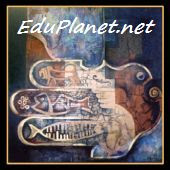OrTorah: "Other" Jewish Languages
"Other" Jewish Languages | |
| www.myjewishlearning.com/xcommon/Hot_Topics/primers_index.htm For most of their history, Jews have been multilingual. Hebrew is the language of the Bible, the principal language of Jewish liturgy, and the language spoken in modern Israel--but it has been the primary language of only a small percentage of Jews who have ever lived. The geographical diversity of the Jewish people accounts for its multilingualism. Jews have adopted the various languages of their homelands and also spoken numerous Jewish hybrid languages. By the beginning of the Common Era, Aramaic had replaced Hebrew as the spoken language of Palestinian Jews. The causes of Hebrew's decline are not wholly understood, but it was certainly hastened by the Babylonian exile in 587 B.C.E. and the continued foreign rule of Palestine during the Second Temple period. Aramaic, like Hebrew, is a Semitic language, and there are many similarities between the two. Because of Aramaic's prominence during the rabbinic era, it is arguably the second most important Jewish language--though it was spoken by non-Jews as well. The Talmud is written in Aramaic, as is the Zohar, the great medieval mystical text. One of the most well known Jewish prayers, the kaddish, also is written in Aramaic. During the talmudic era, Hebrew illiteracy was so high that the Shabbat Torah reading was recited along with a verse-by-verse translation into Aramaic. Jewish hybrid languages have existed for more than two millennia. Linguists have long puzzled with little resolution over whether these tongues should be considered dialects, unique languages, or Creole languages (languages that began as pidgins--simplified forms of speech, often mixtures of two languages--and are later adopted as primary languages). During the Second Temple Period Judeo-Greek, also known as Yevanic, was spoken by Jews in the Hellenistic world. Over the years many other such hybrid languages emerged. These languages tended to adopt structural and lexical elements of the local languages, mixing them with Hebrew and Aramaic words. They were usually written in Hebrew script. The Jews of the Middle East and North Africa spoke Judeo-Arabic. As early as the eighth century, Jews of present day Iran and Afghanistan spoke Judeo-Persian. Many Jews in Italy spoke Judeo-Italian, a language featuring early South Italian elements and Hebrew characters. Most of these languages, and many other Jewish hybrid languages, are extinct or almost extinct. The two most well known Jewish hybrid languages are Judeo-Spanish -- better known as Ladino -- and Yiddish. Judeo-Spanish was spoken by the Jews of medieval Spain, as well as their descendants. It received most of its linguistic characteristics from early-medieval Spanish, but it was written in Hebrew characters. Though Ladino is its earliest documented name, the language is also known as Judezmo (which is a linguistic equivalent of Yiddish) and Spanyol. Today there are still some speakers of Judeo-Spanish in the Balkans, North Africa, and Israel. The Holocaust hastened the decline of the language; the Nazis decimated many Judeo-Spanish speaking communities--particularly in Greece and the Balkans. In many ways, Yiddish is the German equivalent of Judeo-Spanish. Yiddish is almost wholly German in its linguistic structure and vocabulary, but it is written in Hebrew characters. Yiddish originated in the Rhineland cities of Germany in the early Middle Ages, though the first recognizable Yiddish texts date from the 14th century. Over the next few centuries, Yiddish spread all over Europe, from Eastern France to the Baltics. More Jews have spoken Yiddish than any other language. Prior to the Holocaust, Yiddish-speakers accounted for 75 percent of world Jewry, but during the Holocaust, about 75 percent of the world's Yiddish speakers were killed. Today, Yiddish is spoken by fewer and fewer people, though it is still the primary spoken language of many ultra-Orthodox Jews, and there are still probably tens of thousands of Yiddish speakers in the former Soviet states. In addition, the study of Yiddish language and literature is enjoying something of a renaissance on some college campuses. And parts of the language live on in the many Yiddish words that have become part of English vernacular in America, such as nosh (which means to snack) and mentsh (a gentleman). ------------------------ Yahoo! Groups Sponsor --------------------~--> AIDS in India: A "lurking bomb." Click and help stop AIDS now. http://us.click.yahoo.com/VpTY2A/lzNLAA/yQLSAA/eZWolB/TM --------------------------------------------------------------------~-> SENDE EIT INNLEGG? -- Post a message: - Send e-post til -- Send an e-mail to: HaTsafon@yahoogroups.com LESA TIDLEGARE INNLEGG? -- Read previous messages: - Gå til denne nettsida: -- Go to this web site: http://groups.yahoo.com/group/HaTsafon SEIE OPP MEDLEMSSKAPET? -- Unsubscribe: - Send ein e-post til: -- Send an e-mail to: HaTsafon-unsubscribe@yahoogroups.com Yahoo! Groups Links <*> To visit your group on the web, go to: http://groups.yahoo.com/group/HaTsafon/ |




0 Comments:
Post a Comment
<< Home